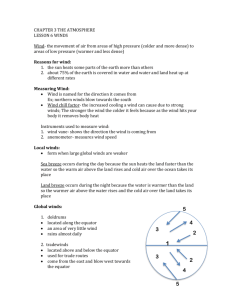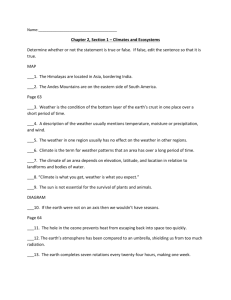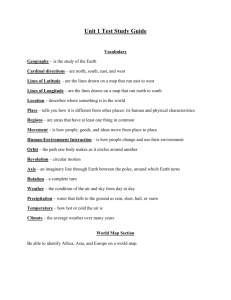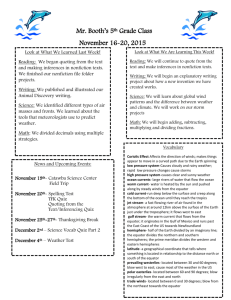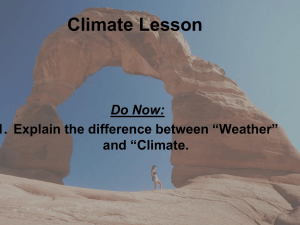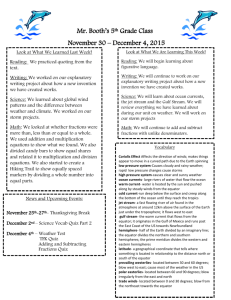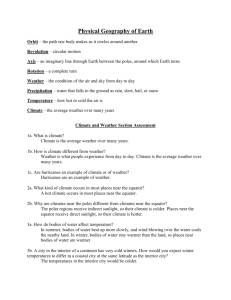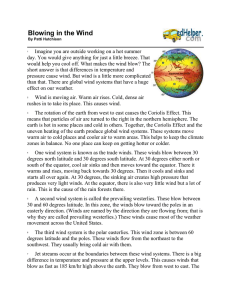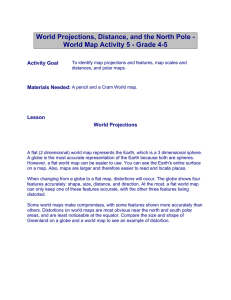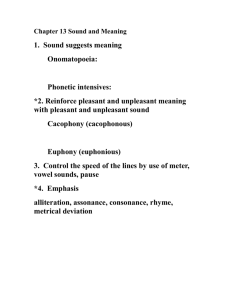Terms to know
advertisement
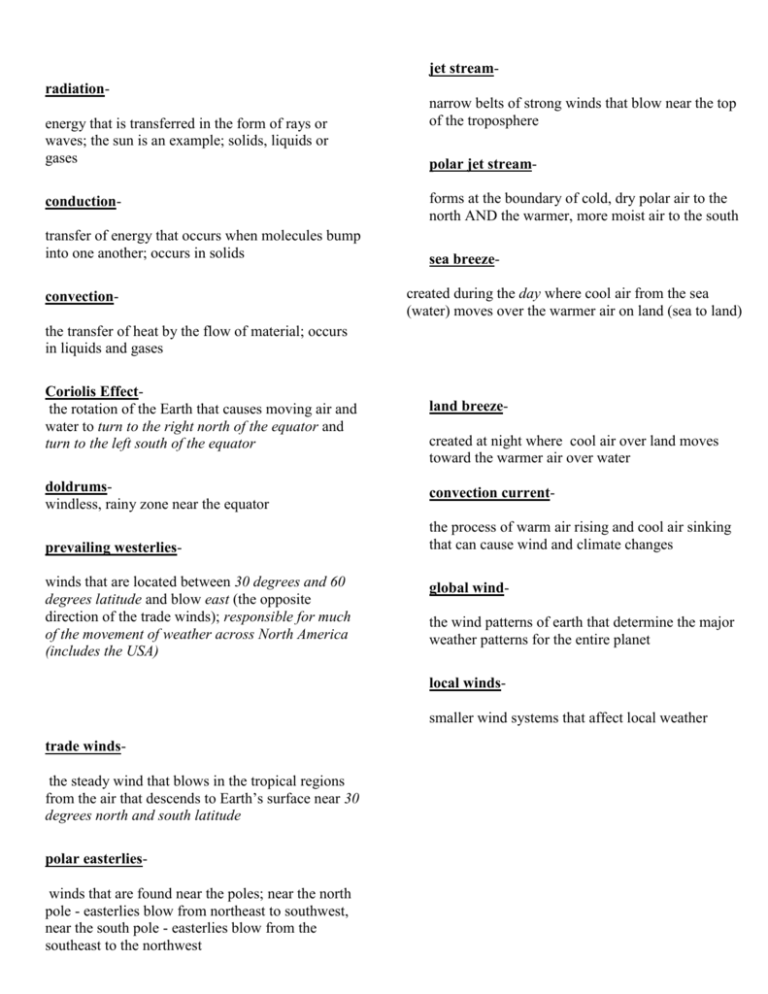
jet streamradiationenergy that is transferred in the form of rays or waves; the sun is an example; solids, liquids or gases conductiontransfer of energy that occurs when molecules bump into one another; occurs in solids convection- narrow belts of strong winds that blow near the top of the troposphere polar jet streamforms at the boundary of cold, dry polar air to the north AND the warmer, more moist air to the south sea breezecreated during the day where cool air from the sea (water) moves over the warmer air on land (sea to land) the transfer of heat by the flow of material; occurs in liquids and gases Coriolis Effectthe rotation of the Earth that causes moving air and water to turn to the right north of the equator and turn to the left south of the equator doldrumswindless, rainy zone near the equator prevailing westerlieswinds that are located between 30 degrees and 60 degrees latitude and blow east (the opposite direction of the trade winds); responsible for much of the movement of weather across North America (includes the USA) land breezecreated at night where cool air over land moves toward the warmer air over water convection currentthe process of warm air rising and cool air sinking that can cause wind and climate changes global windthe wind patterns of earth that determine the major weather patterns for the entire planet local windssmaller wind systems that affect local weather trade windsthe steady wind that blows in the tropical regions from the air that descends to Earth’s surface near 30 degrees north and south latitude polar easterlieswinds that are found near the poles; near the north pole - easterlies blow from northeast to southwest, near the south pole - easterlies blow from the southeast to the northwest

